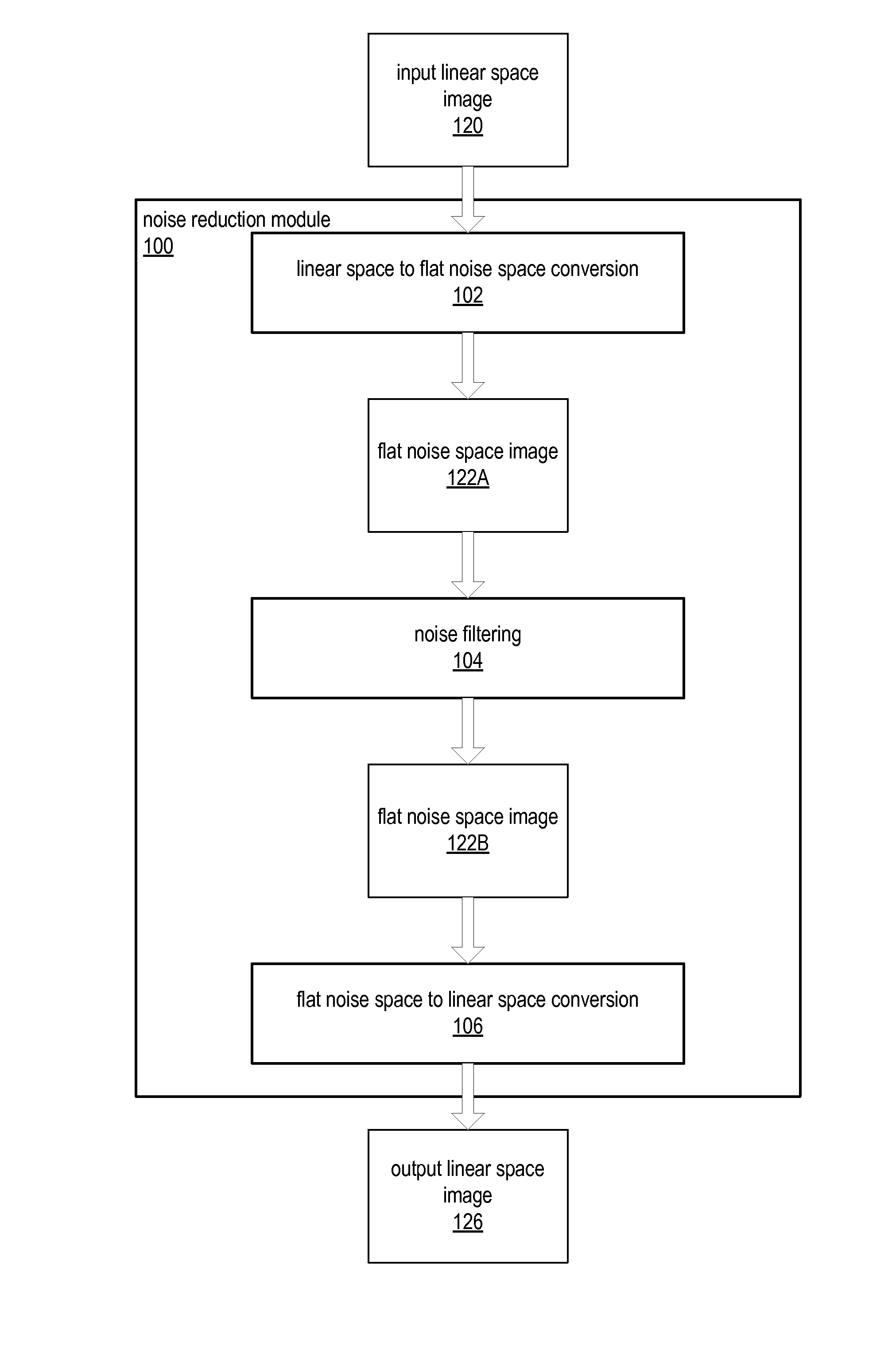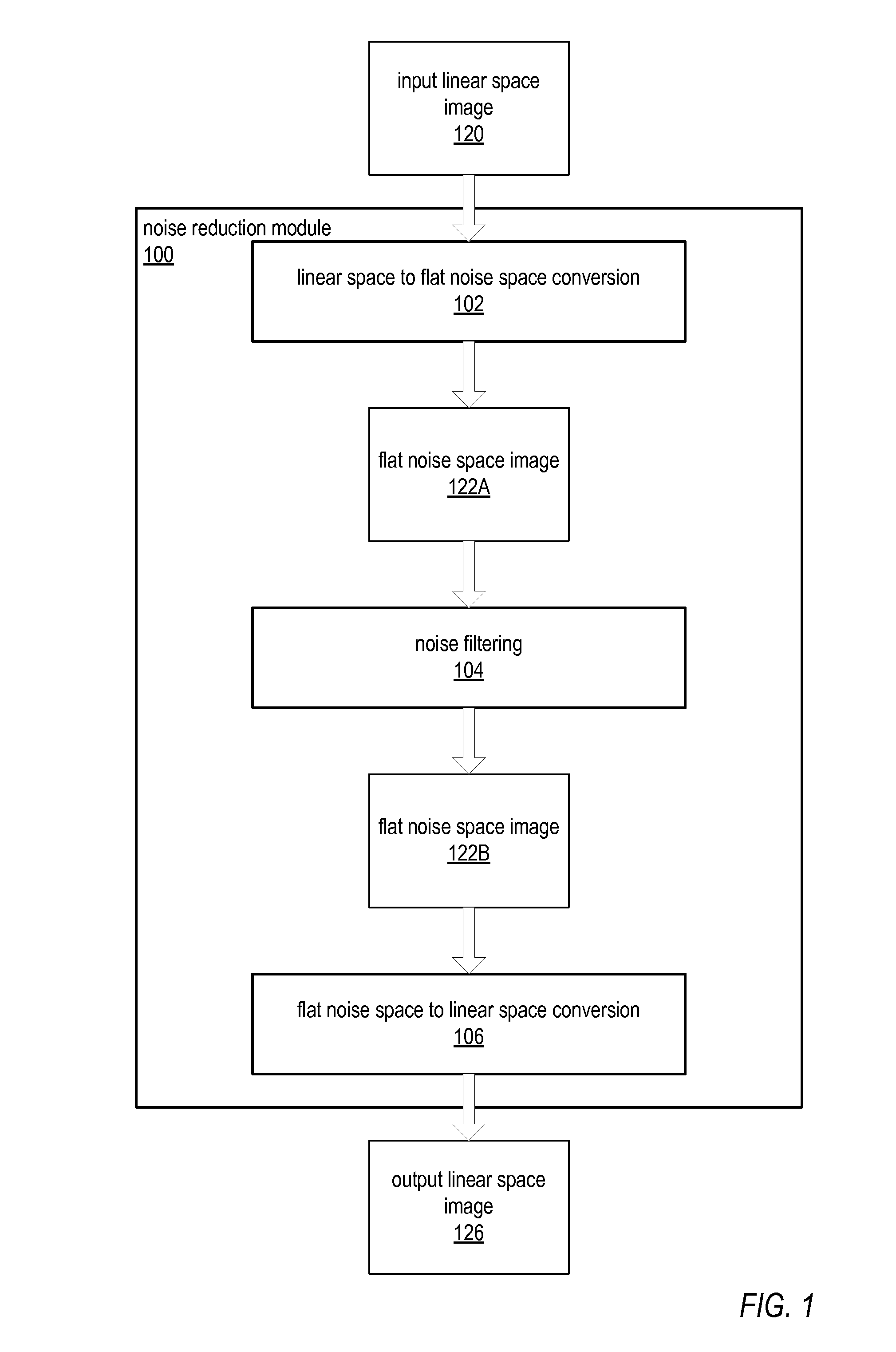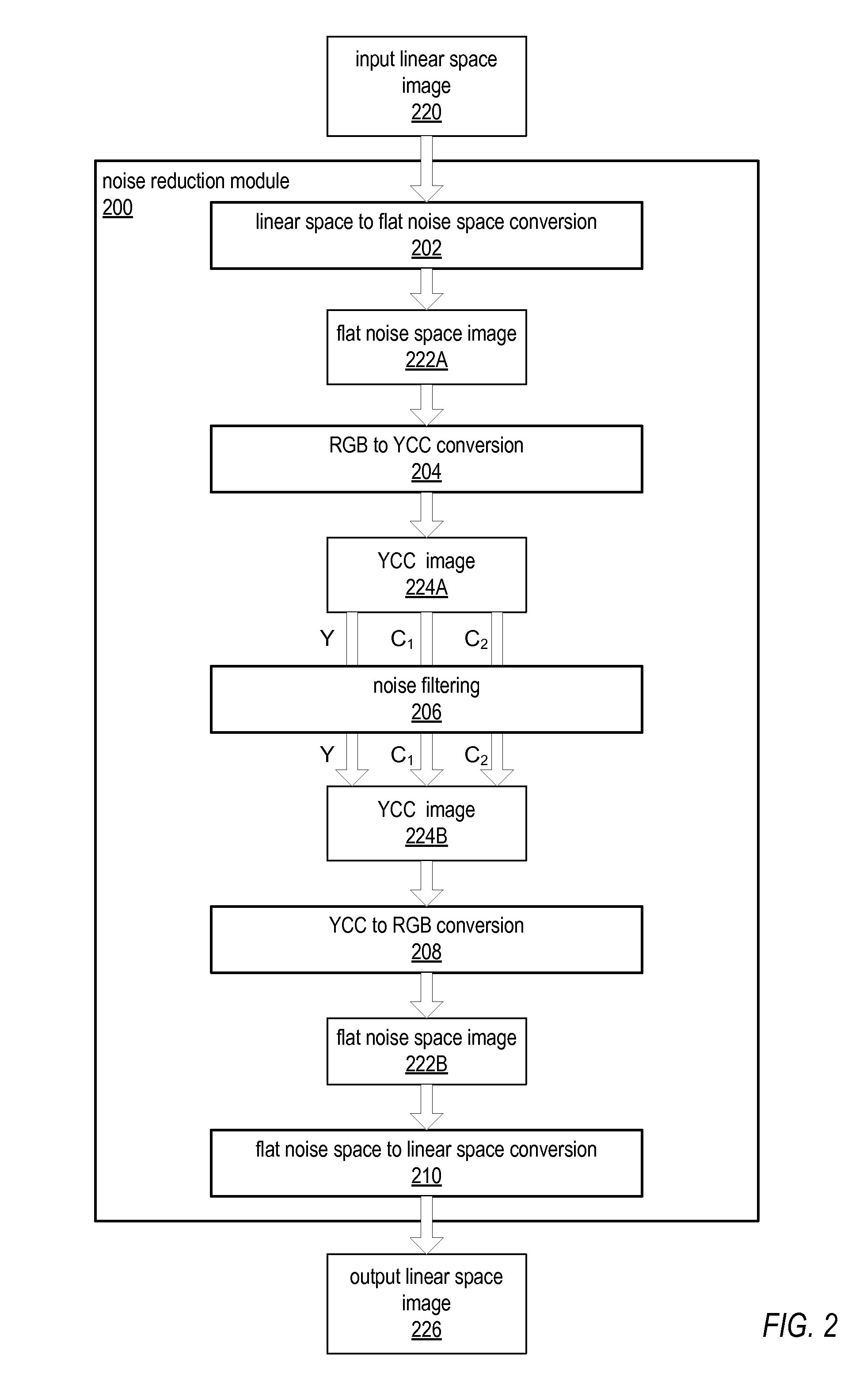Methods and apparatus for noise reduction in digital images
a digital image and noise reduction technology, applied in image enhancement, image analysis, instruments, etc., can solve the problems of affecting the quality of digital images, and introducing noise into images, so as to reduce the effect of color “ bleeding” and improve the quality of images
- Summary
- Abstract
- Description
- Claims
- Application Information
AI Technical Summary
Benefits of technology
Problems solved by technology
Method used
Image
Examples
example implementations
[0085]FIG. 7 illustrates an example noise reduction module that may implement one or more of the noise reduction techniques illustrated in FIGS. 1 through 6. Module 700 may, for example, implement one or more methods for reducing or removing noise from one-channel and / or N-channel (e.g., RGB) images. For example module 700 may implement the fast color noise reduction method, the fast luminance noise reduction method, the higher-quality color noise reduction method, and the higher-quality luminance noise reduction method. Alternatively, a module 700 may implement only the fast color noise reduction method and the fast luminance noise reduction method, or only the higher-quality color noise reduction method and the higher-quality luminance noise reduction method. Other combinations of the noise reduction methods may also be implemented in a module 700; for example, a module 700 may be implemented that only reduces noise in one-channel images, and therefore only implements the luminanc...
example camera
[0098]Embodiments of a noise reduction module and / or of the various image noise reduction methods as described herein may be implemented in various digital cameras. One such camera is illustrated by FIG. 9. In some embodiments of a camera 1100, the camera may include at least a main lens 1102 and a photosensor 1106 (e.g., a CCD or CMOS device). While main lens 1102 is shown as internal to the camera1100, in some cameras, such as DSLR cameras, main lens 1102 may be external and detachable so that the camera lens 1100 can be changed.
[0099]In general, embodiments of a camera 1100 may include, in addition to main lens 1102 and photosensor 1106, any other type of elements and features that may be found in digital cameras. For example, camera 1100 may include a shutter 1104 located in front of or behind main lens 1102, one or more processors 1118, and a power supply or power source 1116, such as one or more replaceable or rechargeable batteries. Camera 1100 may include a memory stor...
PUM
 Login to View More
Login to View More Abstract
Description
Claims
Application Information
 Login to View More
Login to View More - R&D
- Intellectual Property
- Life Sciences
- Materials
- Tech Scout
- Unparalleled Data Quality
- Higher Quality Content
- 60% Fewer Hallucinations
Browse by: Latest US Patents, China's latest patents, Technical Efficacy Thesaurus, Application Domain, Technology Topic, Popular Technical Reports.
© 2025 PatSnap. All rights reserved.Legal|Privacy policy|Modern Slavery Act Transparency Statement|Sitemap|About US| Contact US: help@patsnap.com



